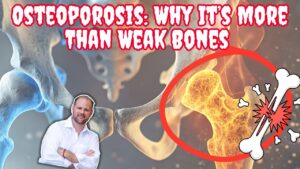- Have you ever had your cholesterol levels checked and received a clean bill of health? It’s time to take a closer look at your heart health with NMR Lipid Profile testing. This advanced test measures the number of small LDL particles in your bloodstream, giving you a more accurate picture of your risk for cardiovascular disease.
- In this test, LDL particle number is the key metric to pay attention to. A number less than 100 is ideal, while a number greater than 2000 is considered very high. This is because the more small LDL particles you have, the higher your risk for heart disease.
- It’s important to note that 50% of all heart attack patients have normal cholesterol levels. Total cholesterol is no longer considered the best indicator of heart health. That’s why the NMR Lipid Profile is so important – it provides a more comprehensive understanding of your specific LDL particle size and number.
- If you’re interested in learning more about NMR Lipid Profile testing, visit my website for more information.
- Also, another important part of the advanced cholesterol panel: take a look at the importance of what high triglycerides means.
Frequently Asked Questions (FAQ)
An NMR (Nuclear Magnetic Resonance) Lipid Profile is an advanced blood test that goes beyond measuring just the amount of cholesterol (like LDL-C). It actually counts the number of LDL particles (LDL-P) and determines their size. This is crucial because small, dense LDL particles are more likely to become trapped in artery walls and cause plaque buildup, leading to heart disease. A standard test might show "normal" total cholesterol, but an NMR can reveal a high number of these dangerous particles, identifying a hidden risk.
The LDL Particle Number (LDL-P) is now considered a more important risk factor. As the post states, 50% of heart attack patients have normal cholesterol levels. Think of it this way: LDL cholesterol measures the cargo (cholesterol) inside the particles, while LDL-P counts the number of vehicles (particles) carrying that cargo. A high number of small, dense particles (a high LDL-P) means more "vehicles" are able to penetrate the artery walls, creating a much higher risk than simply having a lot of "cargo" carried by a few large, fluffy particles.
High triglycerides are a significant red flag and are often closely linked to the pattern of small, dense LDL particles. This combination is typically part of a metabolic profile that includes insulin resistance. When triglycerides are high, it often signals that your body is preferentially creating the more dangerous, small LDL particles. Therefore, high triglycerides reinforce the cardiovascular risk identified by a high LDL Particle Number on an NMR test.








